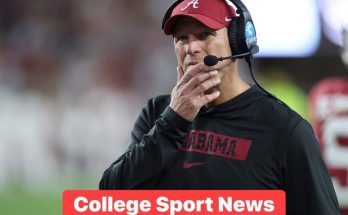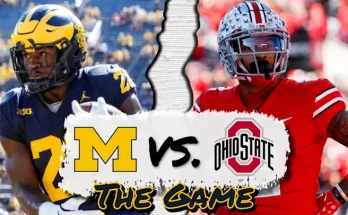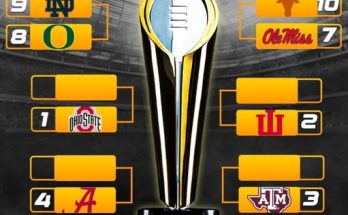What the Georgia Football Offense Needs from the Tight End Position in 2025
As the Georgia Bulldogs look to their 2025 season, one position that will play a pivotal role in their offensive strategy is tight end. In recent years, the Bulldogs have had a history of successful tight ends who were key components of the team’s balanced, powerful offense. From future NFL talent like Brock Bowers to strong supporting players, Georgia has used tight ends effectively in both the passing and run games. However, with the potential departure of Bowers and other key contributors, what does the Georgia football offense need from the tight end position in 2025?
The Tight End Tradition at Georgia
Over the past few years, Georgia has built a reputation for utilizing tight ends in multiple facets of the game. Under head coach Kirby Smart, the Bulldogs have combined a strong rushing attack with the ability to stretch the field vertically, and the tight ends have been integral to both aspects. Georgia has produced high-caliber tight ends, such as Brock Bowers, who could dominate in both the passing game and as a blocker, showcasing the importance of the position in Georgia’s offense.
In 2025, Georgia’s offense will continue to need tight ends who can effectively contribute in both the passing and running game. The Bulldogs have typically run a pro-style offense, making use of 12 personnel (one running back, two tight ends) to take advantage of mismatches in the defense. The tight end’s ability to serve as both a blocker and a pass-catcher allows Georgia to create versatility, which keeps opposing defenses on their toes.
1. Versatility in Blocking
First and foremost, Georgia will need tight ends who can be effective blockers. The Bulldogs’ offense has long thrived on physicality in the running game, and tight ends play a critical role in setting the edge for running backs like Kendall Milton or Daijun Edwards. Whether it’s lining up as an in-line tight end, acting as an extra blocker on the line of scrimmage, or motioning across the field to set up blocking angles, the tight end position will remain critical in creating running lanes for the Bulldogs’ backs.
Given Georgia’s emphasis on running the football, the tight end must excel in both the passing game and the ground game. They need to create push and ensure the offense can sustain drives and control the tempo. Tight ends who can perform well in the run-blocking department allow Georgia to stay balanced, mixing run plays with play-action passes to keep opposing defenses guessing.
In 2025, Georgia will look for tight ends who can match the blocking standards set by former Bulldogs like Darnell Washington, a 6’7” specimen who was one of the best blockers in college football. Even though Washington’s shoes may be hard to fill, the Bulldogs will need tight ends who possess both the size and mentality to lock down their blocks in the trenches.
2. A Dynamic Receiving Threat
While Georgia’s offensive identity has often been built around its running game, tight ends have frequently been relied upon as dynamic receiving threats in the passing game. In 2025, Georgia will need its tight ends to continue this trend, especially as they potentially look to replace one of the best to ever do it in Brock Bowers, who has been a game-changer in the passing game.
The Bulldogs’ offense has showcased its ability to spread the field with tight ends who can attack defenses both over the middle and on the outside. Whether it’s running routes up the seam, finding soft spots in the defense, or using their size and physicality to win contested catches, tight ends must be capable of creating mismatches against linebackers and safeties.
Georgia needs tight ends who can stretch the defense vertically and create big plays, especially in the red zone. A reliable receiving option in the tight end position will continue to be key for Georgia’s offensive game plan, particularly in play-action situations where the tight end can exploit defensive weaknesses. The ability to run effective routes and be a safety valve for the quarterback is crucial for any tight end in Georgia’s system.
As the Bulldogs prepare for 2025, they will look for a tight end or multiple tight ends who can establish themselves as viable targets in the passing game, complementing Georgia’s deep pool of talented wide receivers. Whether it’s through quick slants, seam routes, or even screens, Georgia needs tight ends who can stretch the defense and be a consistent threat.
3. Red Zone Threats
One of the most important areas where tight ends have excelled for Georgia is in the red zone. Tight ends, with their size and physicality, are ideal for red-zone situations where precision, strength, and matchup exploitation are paramount. Whether it’s catching passes in the corner of the end zone, using their size to shield defenders, or making tough catches in traffic, the Bulldogs need tight ends who can produce when the field shrinks and scoring opportunities become harder to come by.
Tight ends who can win contested catches and be reliable in high-pressure situations will be essential for Georgia’s red zone offense in 2025. Bowers, for example, was often the go-to target in these situations, using his elite athleticism and natural football IQ to make plays. If Georgia is to continue its high-scoring ways, they will need a tight end capable of assuming a similar role.
Additionally, with the physical nature of the run game that Georgia utilizes, having a tight end who can slip out of the backfield and make plays in the red zone will be critical in keeping opposing defenses guessing. These short-yardage situations often come down to blocking schemes, but when the ball is in the air, Georgia needs tight ends who can be playmakers.
4. Developing Leadership and Consistency
While athletic ability and skill will obviously be crucial in 2025, Georgia will also need tight ends who can step up as leaders in the locker room and on the field. With the potential departure of key players, including possibly Brock Bowers, the tight end group will need to remain consistent and dependable. Young tight ends will need to mature quickly and contribute in meaningful ways, both as blockers and receivers.
Leadership will be important in helping Georgia maintain the culture of success established under Kirby Smart. Tight ends will not only need to lead by example in terms of work ethic, but also step into roles where they mentor younger players. Whether it’s showing a freshman how to run precise routes or helping a young tight end perfect their blocking technique, veteran tight ends will be critical in maintaining the continuity and standards set by previous Bulldogs.
5. Finding Depth in the Position
As we look to 2025, depth at the tight end position will also be vital for Georgia. While the Bulldogs will likely look to a returning player or new recruit to be the focal point of the position, having quality depth can provide flexibility in the offense. An injury to a starter could derail the tight end’s contributions, so Georgia will need multiple tight ends who can rotate in and out, ensuring that there is no drop-off in blocking or receiving ability.
In fact, Georgia’s use of multiple tight ends in their offensive sets has been one of the ways they’ve kept defenses off balance. In 2025, if the Bulldogs are looking to maintain or improve their offensive efficiency, they will need to continue developing depth at the position. This will not only create depth in the running and passing game but also keep the team flexible in terms of play calling and personnel choices.
6. Balancing the Traditional and Modern Tight End Roles
Finally, in 2025, Georgia will need to strike the perfect balance between using tight ends in traditional roles (as blockers) and evolving to take advantage of the modern tight end’s ability to stretch the field. While the Bulldogs have historically relied on traditional tight end play, the evolution of offenses across the country has required teams to adapt, and Georgia must continue to utilize tight ends in a variety of ways.
Having a tight end who can line up in-line and block, then flex out into the slot and make plays as a receiver, gives Georgia flexibility. A versatile tight end that can be a classic in-line blocker, but also a downfield target, is the ideal mold for Georgia in 2025.



